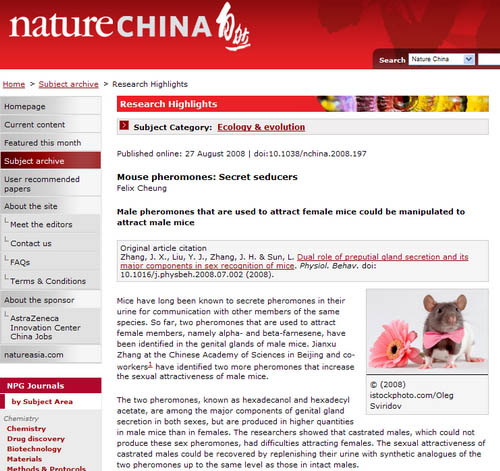Hexadecanol and hexadecyl acetate have been previously reported by Jian-Xu Zhang et al. (Chem Senses. Chem. Senses 32: 293?303, 2007) to be among the major components of preputial gland secretion in both sexes but higher in quantity in males than females suggesting two putative male pheromone compounds in mice.
Recently, they show that castration suppressed the production of the two compounds, further suggesting their association with maleness. Adding preputial gland secretion and the synthetic analogs of the two compounds to castrated male urine at their physiological levels in intact males increased the attractiveness of castrated male urine to female mice, showing that the two compounds were indeed male pheromones. Furthermore, their sexual attractiveness disappeared upon removing the vomeronasal organs (VNOs) from female recipients. Replenishing castrated male urine with preputial gland secretion and the two compounds at their physiological levels in females increased the attractiveness of castrated male urine to males. Such a reversal of sexual attractiveness for hexadecanol and hexadecyl acetate suggests that they had opposing dual effects in sexual attractiveness in a dosage-dependent manner. This work has been reported in Physiology & Behavior journal (Zhang J.X., Liu Y.J., Zhang J.H., and Sun L. 2008. Dual role of preputial gland secretion and its major components in sex recognition of mice. Physiology & Behavior, 95:388-394).
On 27 August 2008, NatureChina highlighted this study by the title tag of Mouse pheromones: Secret seducers-Male pheromones that are used to attract female mice could be manipulated to attract male mice (doi:10.1038/nchina.2008.197).
(By: Professor Jian-Xu Zhang)


